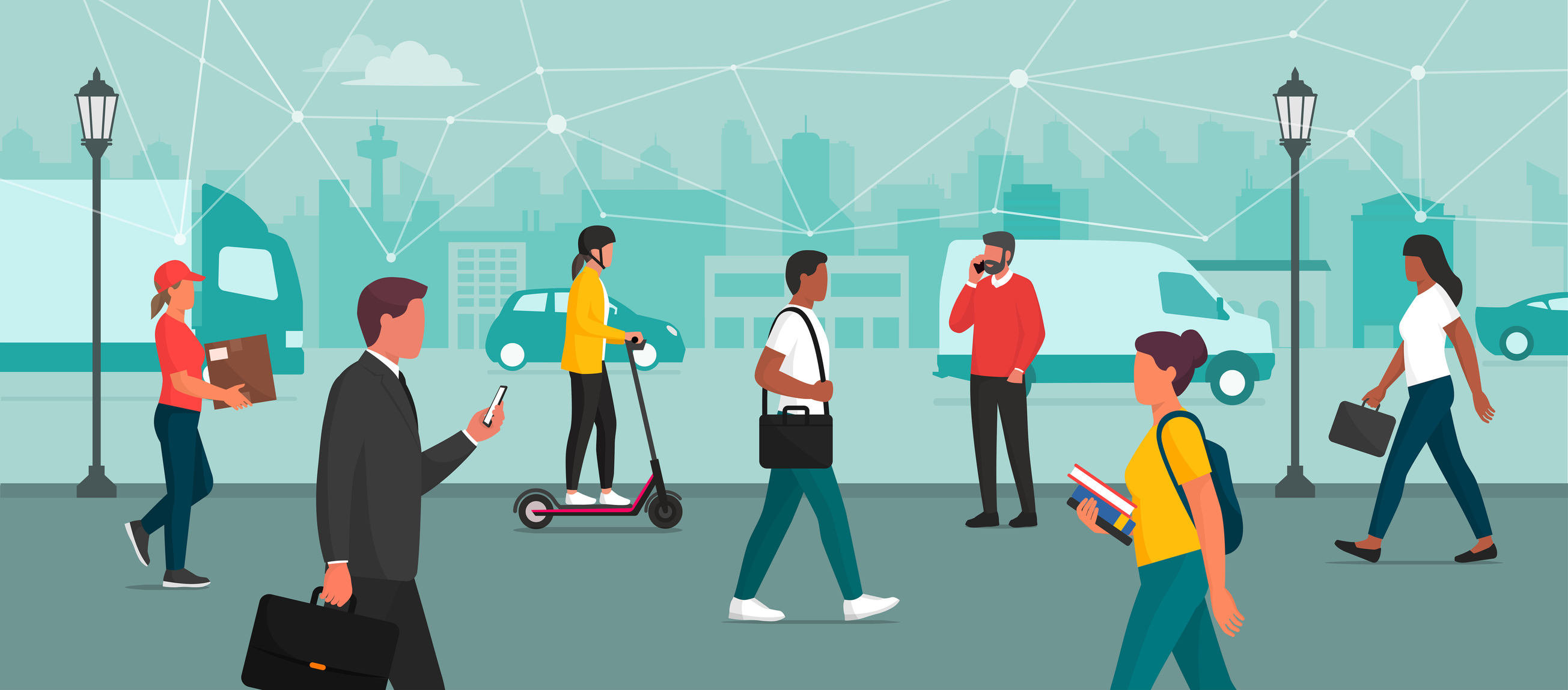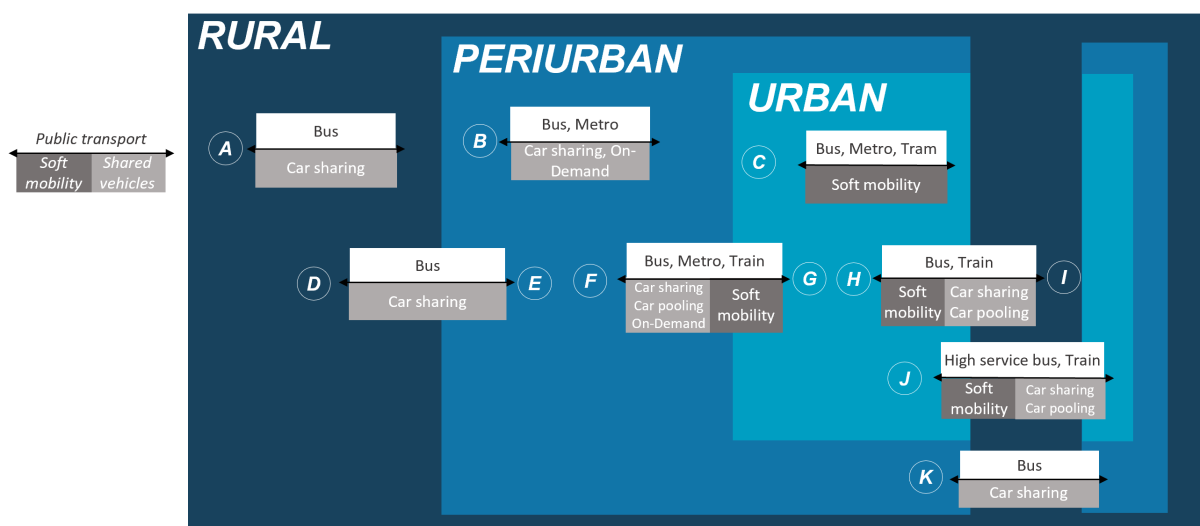PART I – User & territory focus
Today, regional & local administrations, cities & public transport operators & authorities have a role to play in order to democratize the mix between shared mobility & public transportation and help make the switch from an ownership to a usage behaviour.

Why make the switch ?
- To decrease the number of individual cars on the roads
- To lower pollution & noise nuisance
- To liberate public space
- To tend to a more sustainable & collaborative mobility
Although it is straightforward in theory, the application of a multimodal switch is often complicated due to a lack of understanding of the different natures of the start & arrivals areas, and therefore their influence on the possible modes of transport. Several constraining parameters exist for each type of area, from the availability / density of the modes of transport & the range of choices to the characteristics of the journey (delays, correspondences), which limit the possibilities.
By crossing the different types of travel over the encountered areas & the parameters of the respective areas...

… the proper combination between public transportation & shared mobility across the different types of areas can be defined.

To allow a proper combination between public transports & shared mobility, a thorough look out for the best tariff system is necessary. In the next article, we will talk about the different pricing systems that can be put in place!

Written by
Kelly L., Business Manager, Energy & Transport
